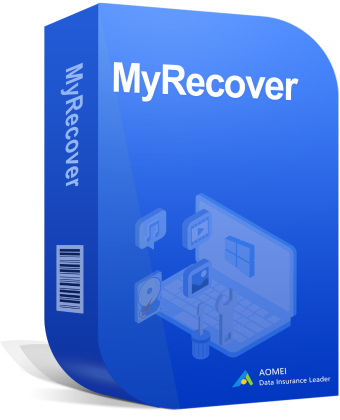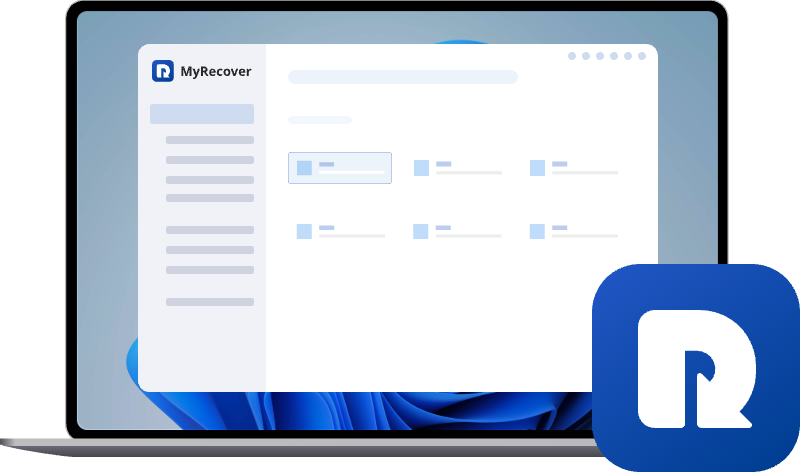What Happens When You Empty the Recycle Bin? Everything Explained
What happens when you empty the Recycle Bin? Yes, just as you might think, all files will disappear from the Recycle Bin. Will these files deleted from the Recycle Bin be impossible to retrieve forever? Fear not! This guide will uncover the secrets of the Recycle Bin one by one and help you recover deleted files from Recycle Bin.
I Accidentally Emptied My Recycle Bin!
I recently encountered a problem where I accidentally emptied my Recycle Bin on my Windows 11 PC, and lost several important files that I hadn't intended to delete. I understand that once the Recycle Bin is emptied, the files aren't easily recoverable, but I’m hoping there might still be a way to get them back. Has anyone else experienced this issue and successfully recover deleted files after emptying the recycle bin?
- Question from suttonchu
When files are deleted on Windows, it's believed that most people will check the Recycle Bin first. Windows Recycle Bin is a safety net for data, where you can find all deleted files (not permanently deleted) until they are restored or the Recycle Bin is emptied. As we all know, once the Recycle Bin is emptied, all files in it will disappear instantly, with no way to access or recover them on Windows.
What Happens When You Empty the Recycle Bin?
When the Recycle Bin is emptied, the files that were originally stored in it will be permanently deleted. The Windows system will release the disk space occupied by these files and mark it as "available for overwriting by new data". At this point, if new data is written, these permanently deleted files will be overwritten by the newly written data, making it very difficult to recover them.
Therefore, if you accidentally empty the Recycle Bin, you must stop using the disk to prevent data from being overwritten.
Is It Possible to Recover Files from the Emptied Recycle Bin?
The encouraging thing is that you can recover deleted files from emptied Recycle Bin before they are overwritten. If you have backed up these files using Windows' built-in backup tools or cloud backup tools, you can restore them directly from the backup. If no backup is available, professional data recovery tools will be the last resort. Let's explorer them one-by-one.
How to Recover Deleted Files from Recycle Bin After Empty
This section will provide 6 methods to recover files from an emptied Recycle Bin. Whether you have backups or not, whether you are a professional or a computer novice, you can find a method that suits you.
Method 1. Restore Previous Versions
If you had System Protection or File History enabled, Windows may have saved older copies of your folders/files automatically. This feature allows you to restore a file or folder to an earlier state.
Step 1. Open File Explorer and navigate to the folder where the lost files were stored.
Step 2. Right click on the folder and choose "Restore previous versions" from the context menu.
Step 3. Choose a desired version from a list of versions and click "Restore" to recover it to its original location.
Method 2. Restore Your Files with File History
File History is built-in backup tool in Windows, which can regularly backup the directory like Documents, Videos, Pictures, Downloads. If you have enabled File History on Windows, you can restore the lost data when you needed.
Step 1. Type "Restore your files with File History" in the start menu and open it.
Step 2. Browse and select the folder including the files you wish to recover.
Step 3. Choose a desired version based on the backup time and click the green "Restore" button to return it.
Method 3. Recover from Backup and Restore (Windows 7)
If you previously used the Backup and Restore tool to create a full system backup, your deleted files might still be recoverable from there.
Step 1. Open "Backup Settings" and select "Go to Backup and Restore (Windows 7)".
Step 2. Choose "Select another backup to restore files from" and select a created backup including the lost files.
Step 3. Select files you wish to restore. You can click "Browse for files/folders" to select specific file or folder.
Step 4. Choose a destination folder to save the recovered files and click "Restore" to start the process.
When the process is finished, the message "Your files have been restored" will pop up. You can check the recovered files by clicking "View restored files".
Method 4. Recover from Cloud Backup Tool
If you're using cloud backup services like OneDrive, Google Drive, or Dropbox, your files might still be in the cloud—even if deleted locally. Cloud backup tools often retain deleted files for 30 days giving you a second chance at recovery. Take OneDrive as an example here:
Step 1. Sign in to OneDrive with your account.
Step 2. Select the "Recycle bin" section and choose the files you want to recover.
Step 3. Click "Restore" in the left upper corner to return it to its original location.
Method 5. Windows File Recovery
Microsoft offers an official command-line utility: Windows File Recovery, useful for recovering files that have been permanently deleted. It scans the disk for traces of deleted files and attempts to restore them. Follow these steps to recover deleted files with Windows File Recovery command:
Step 1. Download and install Windows File Recovery on your computer from Microsoft official channel.
Step 2. Open Windows File Recovery and run it as administrator.
Step 3. Type the following command "Winfr C: D: /extensive" and press "Enter". Replace the drive letters "C" and "D" with your actual drive letters.
- ★Tips:
- C: the source drive letter.
- D: the destination drive letter.
- Extensive: the scan mode. If you wan to recover recently deleted files, you can switch to "regular" mode.
When the process is completed, you can press "y" to check the recovered files in the destination folder.
Method 6. Recover with MyRecover
If you don't have a backup available and aren't used to command-line tools, this professional data recovery tool—MyRecover—is tailor-made for you. It can scan the drive on your computer and give an opportunity to recover deleted files. MyRecover doesn't require running complex command lines, and you can achieve data recovery just by clicking icons.

- Easy to use, no technical skills required.
- "Quick Scan" for recently deleted files while "Deep Scan" for thoroughly searching lost data from formatted, corrupted, or inaccessible drives.
- Supports over 1000+ file types recovery, including documents, photos and videos (JPG, PNG, MP4, etc.), emails, compressed files, and more.
- Works on all modern windows versions like Windows 11, 10, 8, 7 and Server 2025, 2022, 2019, 2016.
- Compatible with NTFS, FAT32, exFAT, ReFS, and even Ext file systems.
Step 1. Download and install MyRecover on your computer from secure channel, avoid installing it on the drive with lost files.
Step 2. Launch it and choose a drive to scan for lost files, then click "Scan".
Step 3. Choose the files you wish to recover from the recoverable lists and click "Recover". You can use the filtering function in the upper right corner to quickly locate the files you want to recover.
Step 4. Select a location different from the original one to save the recovered files.
Once the process is completed, the message indicating successful recovery will pop out. You can access the recovered files by clicking the destination folder path or "Browse" button.
Conclusion
So, what happens when you empty the Recycle Bin? The files in it will vanish immediately. If you stop using the drive after data loss and use correct methods, recovery is often successful. Think twice before emptying the Recycle Bin.
If you're looking for a stress-free, effective recovery solution after emptying the Recycle Bin, MyRecover is definitely worth a try. MyRecover also provides a Professional version. It allows unlimited data recovery quota and preview function before restoration. With MyRecover, you can enjoy deeper scanning, faster recovery, and peace of mind on data security.


